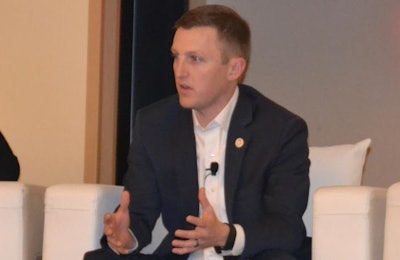
When it comes to dealing with animal rights or environmental activists, those involved in livestock and poultry production must first identify what category the activist fits into, based on the passion of their beliefs.
Speaking during the 2018 Animal Agriculture Alliance Stakeholders Summit in Arlington, Virginia, on May 4, Bryan Humphreys, executive director of the Ohio Pork Council, described two types of activists: hardliners and pragmatists.
Hardliners
Some activists are so convinced animal agriculture is bad that they are unwilling to listen to other people’s viewpoints, Humphreys said.
“Negotiation is not an option. Discussion and education is not an option,” he said.
For example, in Ohio, many of the hardliners are pointing fingers at animal agriculture and blaming the industry for algae bloom problems in Lake Erie, according to Humphreys.
“We have the hardliners around the lake. [They believe] there is no option but the shutting down of animal agriculture and that we are the problem in Lake Erie, and if we shut down all livestock production, that the lake will magically become better and the algae bloom will go away. The reality is that’s not true.”
The agriculture industry acknowledges that it is a factor, as studies have shown that livestock production is responsible for about 8-12 percent of the total phosphorus going into Lake Erie, Humphreys said, but the hardliners are not willing to listen to reason or accept the data that shows the problem is also attributable to factors other than agriculture.
Pragmatists
It does no good for those in animal agriculture to try to have a discussion with the hardliners, but conversations with pragmatists can have productive results, Humphreys said.
Groups and individuals that are activists truly want to see some change, but they are open to incremental change. They believe in working with the industry and working for the betterment of everybody. In the pragmatist’s mind, consulting with others to come to a solution “will get them further, faster,” said Humphreys.
“Pragmatists are those who are sitting down with us and having conversations about what we can do to improve in animal agriculture and are learning about the things that we already do,” he said.
“It gives us a chance to explain what we believe in.”
In some discussions, pre-existing common ground is revealed.
Humphreys said there are instances when the pragmatists make a suggestion on what the industry can do to improve certain environmental or welfare-related situations, only to be advised that most of Ohio’s producers are already doing what has been suggested.
















